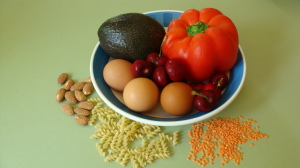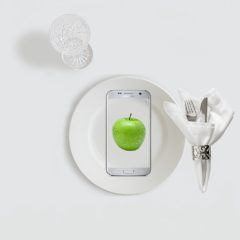During my first class in the study of Chinese medicine, I was told that the Chinese way of thinking was different from everything that I had grown up knowing. I was cautioned not to try to make sense of this new information from a Western perspective as it would only confuse me.
While I’ve been warned not to compare, the difference between the two cultures is readily apparent when we talk about food. It’s hard not to notice how differently we Westerners think about what we eat when compared to the  principles of Chinese food therapy. So, fifteen years after that first day of study, I’m not confused, and I would like to point out a few disparities between the two cultures in how we choose what to eat.
principles of Chinese food therapy. So, fifteen years after that first day of study, I’m not confused, and I would like to point out a few disparities between the two cultures in how we choose what to eat.
-Good food versus bad food. In Western culture, we like to make foods the good guy or the bad guy. A decade ago fats were the villain, today it’s carbohydrates and gluten. This faddish way of eliminating whole food groups is crazy making, and not necessarily healthy.
-Raw versus cooked. In our Western culture, raw foods are king, and the more the better. However, a principle of Chinese food therapy is that it takes more energy, or digestive fire, to break down and digest raw foods than those that are cooked. If you’re ill, your body is depleted or you’re having digestive problems, eating raw food may only aggravate your condition. Cooking your food is a way of “predigesting” it, and a way to get more energy from each meal, because you’re not using that energy to break down raw food and fiber.
-Calories and energy. In general, the Western perspective is that we should control or at least keep track of the calories that we are eating. However, in Chinese medicine, you derive your energy from the food you eat, and you need enough to function. In other words, calories are Qi, or energy, and are needed to perform a whole host of functions including digestion, immunity, healing, movement, and temperature regulation to name a few.
-Too many calories equals fat…or not. We have long believed that if you eat too many calories you will get fat, which may be true. However, in Chinese medicine the underlying cause of obesity is something called dampness. Caused by eating too much of the wrong food and poor digestion, dampness is an accumulation of moisture which puddles in various places in your body. Edema, yeast, athlete’s foot, weepy rashes—and adipose (fat) tissue are all considered boggy accumulations of dampness.
-Food groups. Our Western diets are grouped according to carbohydrates, fats, and proteins. Ideally, we try to get a good balance of each, according to ever-changing research and food pyramids. In Chinese food therapy, foods are categorized by their actions and their inherent temperature. Foods eaten can impact your body to build up vital substances like Qi or Blood, or they can boost circulation or drain dampness. The temperature of a food is a way to describe the post digestive thermal effect on your body—not how spicy or hot it is when you eat it, but how warm or cool you feel later. For example, ginger and cinnamon are considered to be warming foods, while the effect of mint is cooling. In Chinese food therapy, food choices are recommended for you based on how they will act on your body based on your unique needs. For an excellent resource on the properties of food and Chinese food therapy, check out Healing With Whole Foods: Asian Traditions and Modern Nutrition by Paul Pitchford.
-Food additives and preservatives. If you push your cart through the center of any Western large chain grocery store, you will find aisles and aisles of products that have been chemically altered with additives to enhance flavor and shelf life. In Chinese medicine, something called wrecked food is considered to be a source of illness. This originally meant food that has spoiled, however, today food that has been chemically altered beyond recognition as food is also considered wrecked.
So, while perhaps I’ve broken some rules in comparing Western food choices to Chinese food therapy, I believe that doing so offers up a few simple ways that we Westerners can eat a little better—and happier. Choose what’s right for you; don’t get caught up in food fads or the good food/bad food dichotomy. Eat real food, cook most of it, pay attention to your digestion, and enjoy what you eat.




